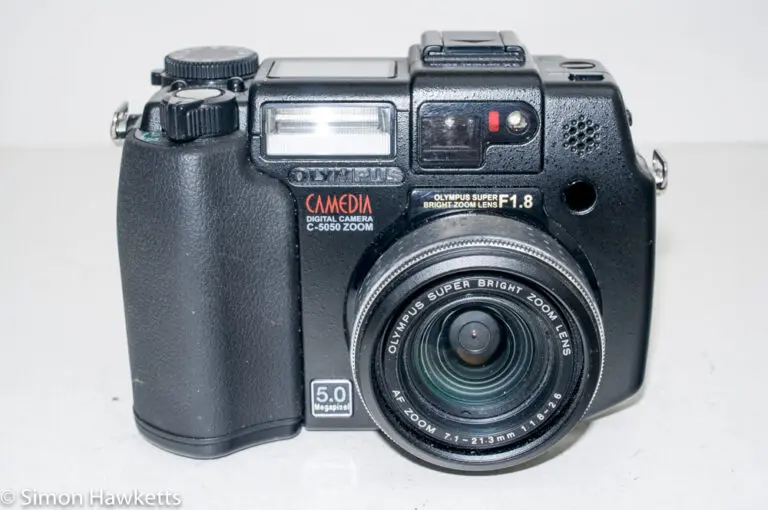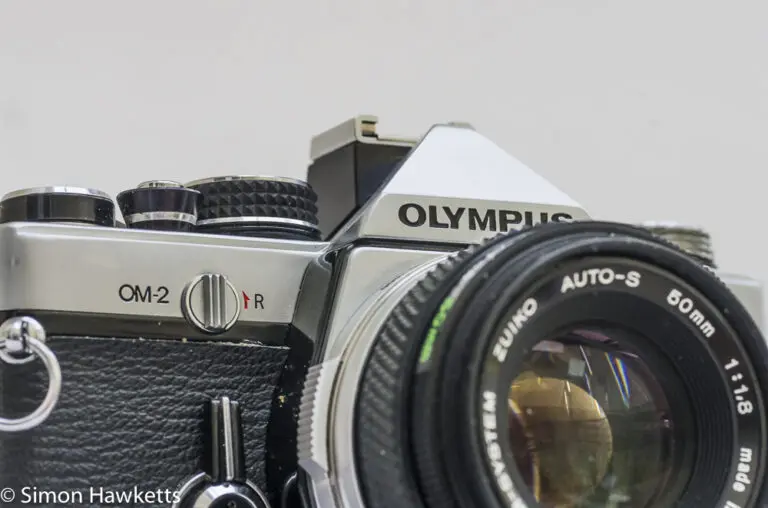Olympus [mju:] II zoom 115 review
This is a review of the Olympus [mju:] II zoom 115, a 35 mm point and shoot compact camera with autofocus, automatic exposure and a 3 zone meter.
Olympus [mju:] II zoom Images
![Olympus [mju:] II zoom 115 review 2 Olympus [mju:] II zoom 115 - lens closed and camera off](https://everythingvintage.uk/wp-content/uploads/2023/02/olympus_mju-1-1024x678.jpg)
![Olympus [mju:] II zoom 115 review 3 Olympus [mju:] II zoom 115 - lens open and camera on](https://everythingvintage.uk/wp-content/uploads/2023/02/olympus_mju-2-1024x678.jpg)
![Olympus [mju:] II zoom 115 review 4 Olympus [mju:] II zoom 115 - 38mm to 115mm zoom lens detail](https://everythingvintage.uk/wp-content/uploads/2023/02/olympus_mju-3-1024x678.jpg)
![Olympus [mju:] II zoom 115 review 5 Olympus [mju:] II zoom 115 - back of camera](https://everythingvintage.uk/wp-content/uploads/2023/02/olympus_mju-4-1024x678.jpg)
![Olympus [mju:] II zoom 115 review 6 Olympus [mju:] II zoom 115 - diopter adjustment](https://everythingvintage.uk/wp-content/uploads/2023/02/olympus_mju-5-1024x678.jpg)
![Olympus [mju:] II zoom 115 review 7 Olympus [mju:] II zoom 115 - top of camera showing zoom and shut](https://everythingvintage.uk/wp-content/uploads/2023/02/olympus_mju-6-1024x678.jpg)
![Olympus [mju:] II zoom 115 review 8 Olympus [mju:] II zoom 115 - viewfinder and autofocus sensors](https://everythingvintage.uk/wp-content/uploads/2023/02/olympus_mju-7-1024x678.jpg)
My Olympus [mju:] II zoom 115 Camera
I have to say, this is an unusual camera for me to buy. I don’t normally bother with the compact, point and shoot end of the 35 mm market, but I saw this in a charity shop and had a vague recollection that the Olympus [mju:] series are quite highly regarded. Since it was only £2.50 and had the added bonus of a film loaded in the camera, I took a chance and bought it.
Although when I bought the camera it had no battery fitted, as soon as I popped a new battery into it, everything sprang to life including the exposure counter which told me that 16 exposures had been taken, leaving 20 still on the film (I can see through the window in the back that it’s a 36 exposure film).
The previous owner was obviously very well-organised because in the little plastic case with the camera were a couple of paper charts which list the exposures from 1 to 37 with a note of what each picture is. It’s interesting that the pictures which have been listed this way have dates in 2011, so the film is approx. 5 years old – although not ideal it’s hopefully new enough that I can get decent pictures from it. Therefore, I’m looking forward to developing the film and seeing if the description matches up with the pictures I get.
When I bought the camera it had a sticky label on it with the previous owner’s details, and I had to peel that off and remove the sticky deposit that was left, which was quite tricky. With that removed, however, the camera is in just about perfect condition, with just a few paintwork edges which have been worn.
Olympus [mju:] II zoom 115 description
This is a point and shoot automatic camera designed to be used by people who want good quality snapshots and don’t want to spend time learning how to get the most from a conventional camera. Being point and shoot means that there is no control of the exposure modes offered, and in fact the camera has almost no controls other than self-timer, flash mode, zoom and shutter release.
I believe these models, of which Olympus produced a lot, are popular currently with Street photographers, because they are small, light and compact with the bonus of a good quality lens, a decent zoom range and in the case of this model, weather proofing.
The style of the camera is very much of its day. Personally, I find it pretty awful, but in the late 1990s a lot of cameras were made in the same plasticky, rounded style. This camera dates from about 1999.
On the back panel is an LCD which shows the number of exposures taken, the battery condition and some indicators showing the flash setting. This panel has the only settings controls which the camera has; there is a tiny button to turn on the self-timer, and another tiny button which toggles the various flash modes.
For such a simple camera to operate, there seem to be more flash modes than would seem healthy! On the support page for the camera, there are listed:
- Auto mode
- Red eye reduction mode
- Flash off
- Fill-in flash
- Night scene mode
- Red eye reduction at night mode
To me that seems quite a lot.
The operating controls are on the top panel, and consist of a zoom lever and the shutter release. The on/off switch is integrated into the lens cover, so sliding the cover turns on the camera, extends the lens to its wide angle setting, pops up the flash and initialising the camera ready for use. Once the lens is out, it isn’t possible to fit the cover back over the lens, so there is a micro-switch integrated into the cover and as it’s pushed towards the lens to close it the lens retracts and the camera turns off.
The viewfinder, although not a through the lens arrangement, does zoom with the main lens which allows the picture to be correctly composed. There is a cross-hair in the centre which marks the focus point and the focus is all automatic with the flash working as a pre-focus light in dark condition when it is switched on.
Next to the viewfinder are a couple of LEDs which show the condition of the flash and the autofocus. The top orange led is illuminated when the flash is charged, and the bottom green led glows when focus is achieved and flashes when the camera hasn’t focused the scene. These are quite helpful because they fall within the eye line when the camera is being used. I was surprised to see that the viewfinder has a diopter adjustment, which I wouldn’t expect in a camera of this class.
In operation, the zoom is (by today’s standards) quite slow and noisy and extends a long way out of the camera.
I think the thing I find most impressive about the camera is the wide zoom range, considering the fact that it’s a full frame 35 mm camera. The 38 mm to 115 mm range goes from a restricted wide angle to a portrait length telephoto, which is quite challenging in a camera this small but with an image circle that big. When you take into account the fact that it’s done at a price which made the camera competitive in the point and shoot, pocket camera market, it’s even more impressive.
Although I can’t at the moment see inside the film chamber on my example because there is a film fitted, the Olympus support site for the camera tells me that the film speed is set by DX coding which can’t be overridden, although that would be standard for a camera of this type.
Overall, this is quite an impressive camera for its class. I didn’t expect a viewfinder diopter or weather proofing, and the zoom range is quite impressive. I will expose the rest of the film and develop it to see what the quality of the lens is like.
Olympus [mju:] II spec
- Olympus [mju:] II 115 zoom 35mm point & shoot automatic camera
- Lens 38mm to 115mm zoom lens
- Aperture f/4.6 to f/10.9 automatically selected
- Shutter fully automatic and electronically set
- Integral flash with selectable modes which is also used as focus pre-flash
- Viewfinder has diopter adjustment and zooms with lens
- Autofocus with 860 steps and automatic macro focusing
- Automatic Exposure measurement with 3 zone metering
- Splash proof and sealed against dust and dirt.
- ISO 50 to 3200 range read from DX coding
- 3V lithium battery (DL123A or CR123A)
- Manual available on line here
Discover more from Everything Vintage
Subscribe to get the latest posts sent to your email.

![Olympus [mju:] II zoom 115 review 1 Olympus [mju:] II zoom 115 - lens open and camera on](https://everythingvintage.uk/wp-content/uploads/2023/02/olympus_mju-2.jpg)
![Olympus [mju:] II zoom 115 review 9 Olympus [mju:] II zoom 115 - lens open and camera on](https://everythingvintage.uk/wp-content/uploads/2023/02/olympus_mju-2-300x199.jpg)
![Olympus [mju:] II zoom 115 review 10 Olympus [mju:] II zoom 115 - back of camera](https://everythingvintage.uk/wp-content/uploads/2023/02/olympus_mju-4-300x199.jpg)
![Olympus [mju:] II zoom 115 review 11 Olympus [mju:] II zoom 115 - 38mm to 115mm zoom lens detail](https://everythingvintage.uk/wp-content/uploads/2023/02/olympus_mju-3-300x199.jpg)


